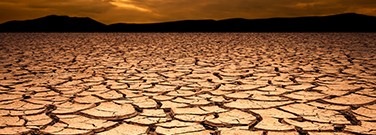Heat and Humidity Levels Are Becoming Hazardous Sooner Than Predicted
By Sadie Laurie
It used to be uncommon for the world’s hottest locations to reach temperatures and humidity levels that are actually dangerous to humans. But in recent decades, signs of global warming led climate scientists to investigate potential changes in trends.
Using computer modeling, they predicted that instances of life-threatening heat and humidity would increase in frequency by the end of the 21st century. It turns out that they were right, but we won’t have to wait that long. Temperature and humidity levels have already been significantly on the rise.
In a recent study, researchers found that extreme moist-heat events have been occurring 25 to 30 times a year, compared to only once or twice a year 40 years ago. Colin Raymond, a climate scientist at NASA’s Jet Propulsion Laboratory in Pasadena, California, led the study with his team. They published their results in Science Advances.
Imminent Health Hazard
Moist-heat is measured in “wet-bulb” temperature, which is a reading taken with a bulb thermometer wrapped in a wet towel. Wet-bulb temperature is hazardous to human health when it reaches 95° Fahrenheit (35° Celsius). It would even kill healthy people relaxing in the shade with unlimited water, according to Radley Horton as reported in the NOAA Research News article “Dangerous humid heat extremes occurring decades before expected.” Horton, who co-authored the study, is a Columbia University professor and leader of NOAA's Urban Northeast RISA team.
“I believe that humid heat is the most underestimated direct, local risk of climate change,” he said. “As with sea level rise and coastal flooding, we are already locked into large increases in the frequency and intensity of extreme humid heat events, and the risk is much larger than most people appreciate.”
“It’s Not the Heat, It’s the Humidity”
On muggy days, people sweat more. When the sweat evaporates, it cools the body down. But when wet-bulb temperatures rise, sweat evaporation is no longer a sufficient process for regulating internal body temperatures.
“When wet-bulb temperatures are extremely high, there is so much moisture in the air that sweating becomes ineffective at removing the body’s excess heat, like what happens in a steam room,” said Raymond. “At some point, perhaps after six or more hours, this will lead to organ failure and death in the absence of access to artificial cooling.”
Weather Station Revelations
After examining records of wet-bulb temperatures from 4,576 weather stations worldwide, the team was able to identify the increased frequency of periods spent at unsafe levels. From 1979 to 2017, wet-bulb temperatures surpassed 88° Fahrenheit (31°Celsius) over 7,000 times and topped 91° Fahrenheit (33° Celsius) over 250 times. The temperatures remained steady for one to two hours with each occurrence.
In addition, two stations along the Persian Gulf registered multiple daily-maximum wet-bulb temperatures above 95° Fahrenheit, which is beyond the survivable limit. One of these weather stations is at Abu Dhabi International Airport in Abu Dhabi, the capital of the United Arab Emirates where nearly 1.5 million people live, according to the Science News for Students article, “Deadly heat: Expected by century’s end, it’s here already” by Jonathan Lambert.
These high-temperature areas are primarily concentrated along coasts where warm, moist ocean air combines with the hot air on land. Locations in the southeastern United States along the Gulf of Mexico recorded wet-bulb temperatures at or above 88° Fahrenheit, including Alabama, Arkansas, the Florida Panhandle, Louisiana, Mississippi, North Carolina, and east Texas. The researchers found even higher readings in northwestern Australia, along the Gulf of California in Mexico, in India and Pakistan, and along the coast of the Red Sea.
“Even at lower wet-bulb temperatures, like 79° Fahrenheit (26°Celsius), those with pre-existing health conditions (like respiratory, cardiovascular, and renal disease), the elderly, as well as those performing strenuous outdoor labor and athletic activities, are at a high risk,” said Horton.
Preparing for More Frequent Extremes
So far, the extreme occurrences have lasted only briefly in specific locations. However, Raymond and his team expect that the areas registering the highest extremes — like near the Persian Gulf and Red Sea — could go beyond 95° Fahrenheit within the next 30 years. That’s about 50 years sooner than scientists originally predicted.
In order to begin to regulate these extreme weather events, we need to study them more to find out what causes them, according to Horton. Researchers also need to examine how they affect energy consumption and resource availability, food supply, and human security.
“The deadly trends in recent decades toward increasingly extreme humid heat underscore a major societal challenge for the coming decades,” Horton said.
Discussion Questions
- High wet-bulb temperatures are dangerous for humans. What other problems could they cause if they become more common?
- What changes might our society have to make to adapt to these weather extremes?
Vocabulary
- Bulb thermometer
- Consumption
- Imminent
- Regulate

